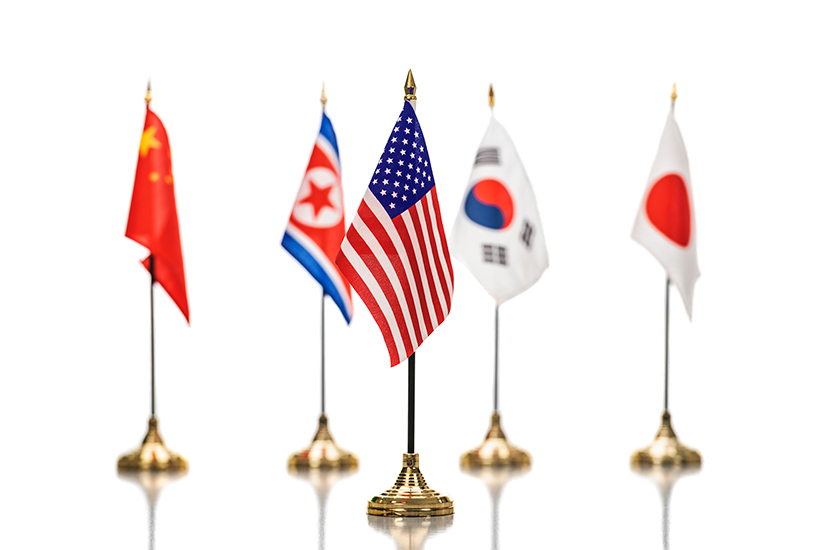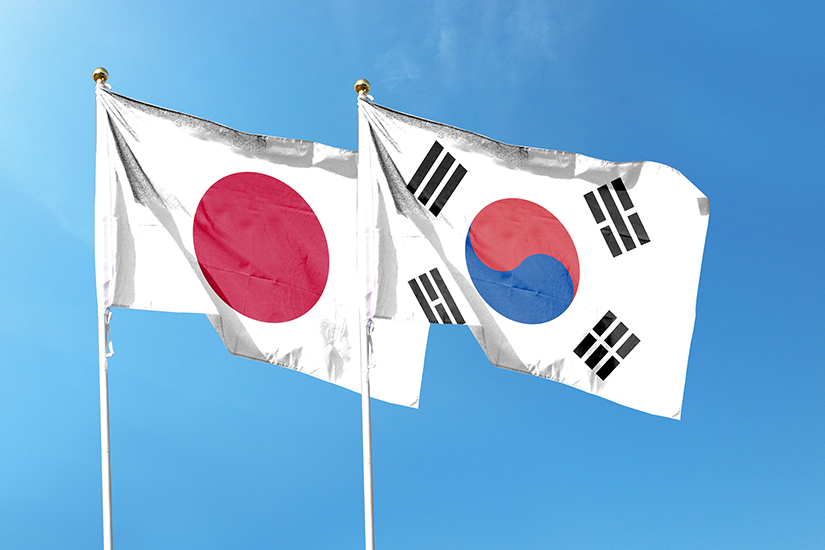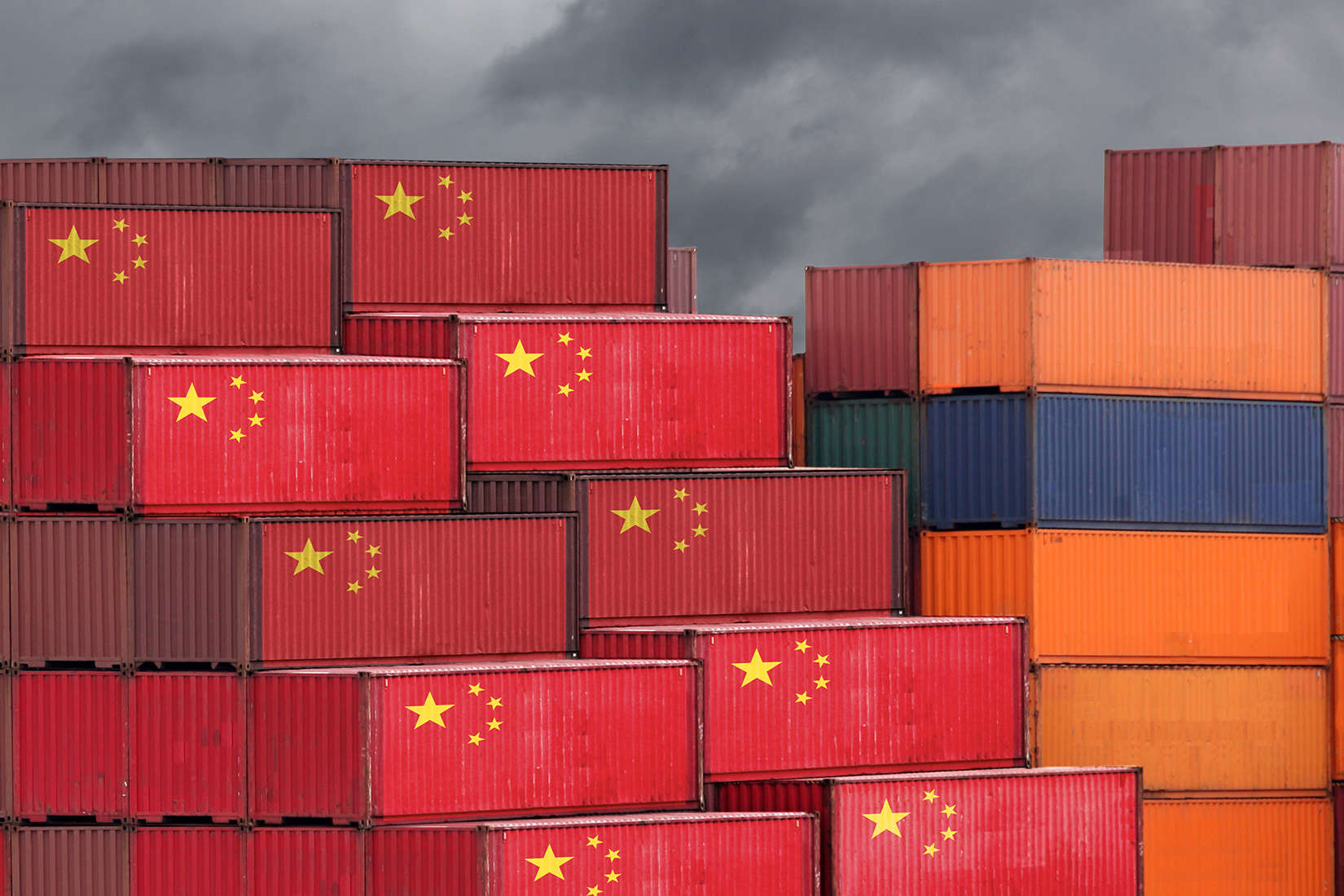During the G7 summit on May 22, a brief exchange of views on trilateral cooperation took place among Prime Minister Kishida Fumio of Japan, President Yoon Suk Yeol of the Republic of Korea (ROK), and President Joe Biden of the United States (U.S.). Despite it being only a fleeting encounter, this exchange showcased that cooperation among the three countries is back on track. Indeed, Seoul, Tokyo and Washington have recently achieved significant progress in trilateral cooperation based on shared values within the Indo-Pacific context.
This essay begins by discussing the recent advancements in Japan-ROK-U.S. trilateral cooperation and highlights major achievements made over the past year. The increasingly complex and unpredictable global landscape has indeed brought the three countries closer together. However, it is important to acknowledge that despite these achievements, there are inherent gaps and differences that have emerged between the three countries in their efforts to promote trilateral cooperation, particularly in dealing with the complexities of China’s influence. Therefore, this essay also addresses the efforts and limitations faced by the three countries in bridging these gaps. It recognizes that while there is a shared recognition of the significance of cooperation, there are challenges and complexities that need to be navigated.

Achievements of trilateral cooperation for a shared Indo-Pacific vision
Over the past year, the recurring meetings and dialogues have paved the way for further progress in trilateral cooperation. The leaders of the three countries convened on the sidelines of the NATO Summit Meeting in late June last year, marking the first trilateral summit in nearly five years. This meeting highlighted a positive shift in the atmosphere between the U.S. and its two closest allies in East Asia.[1]
A few months later on November 13, the three countries’ leaders gathered again in Phnom Penh and made a momentous announcement which designated the three countries as Indo-Pacific partners in the pursuit of a “Free and Open Indo-Pacific, that is inclusive, resilient, and secure”, while applauding an “unprecedented level of trilateral coordination.”[2] The joint statement represents a significant milestone in trilateral cooperation, with the top leaders of the three countries pledging the most comprehensive collaboration to date, embracing cooperation in both economic and security dimensions.
With the official announcement of ROK’s first Indo-Pacific strategy by the Yoon administration in late 2022, it has become increasingly evident that the focus of trilateral cooperation has shifted from East Asia to the broader Indo-Pacific region. Since then, the three countries have made progress in substantive discussions on trilateral cooperation for North Korea missile and nuclear threat and other major issues, including economic security challenges, climate change, and engagement with Pacific Island countries.
This expanded scope of discussion reflects a comprehensive approach of trilateral cooperation to strengthen the rules-based international order and promote prosperity in the Indo-Pacific. It has also garnered considerable attention from home and abroad and successfully demonstrated the three countries’ strong determination to strengthen the unity and coordination of trilateral Indo-Pacific partnership.
Another key achievement of trilateral cooperation is that the three countries have unequivocally displayed their resolve and capability to turn their verbal commitments into actual actions serving their shared Indo-Pacific vision. After a five-year hiatus, trilateral exercises on ballistic missile defense[3] and anti-submarine warfare[4] resumed in August and September of last year respectively. This complements several recent joint exercises, conducted with the aim of not only enhancing interoperability to better defend against the North Korean threat, but also to demonstrate their commitment to safeguard regional security and ensure the rules-based international order in the Indo-Pacific.[5] Moreover, following the Trilateral Ministerial Meeting in early June, the three countries have reached an agreement to establish a system that allows for real-time information sharing of North Korean missile warning data between them within this year.[6]
In one of the most significant moves towards realizing the commitments made in Phnom Penh in the realm of economy, the three countries established an economic security dialogue and successfully held its first meeting in late February.[7] The dialogue marks a meaningful step forward in accelerating their collaborative efforts to build the resilience of supply chains and develop technology in the context of economic security, which ultimately aims to ensure the rules-based economic order and stand up to economic coercion.
As part of these efforts, Japan and the ROK have made notable progress in mending their bilateral economic ties. Recently in March, Tokyo relaxed export restrictions to the ROK on three essential chemicals for the manufacture of semiconductors and displays.[8] One month later, Seoul relisted Japan in its trade whitelist of preferred trading partner after a three year-long period of removing them, while Tokyo announced it will return the ROK to its trade whitelist. Moreover, the ROK-based Samsung Electronics, the world’s largest memory chipmaker, disclosed its plan to build a semiconductor development facility in Yokohama, Japan, which will possibly facilitate bilateral cooperation in the chip industries.[9]

Nuanced differences among Indo-Pacific partners
Despite the recent achievements made in promoting more practical and operational cooperation, doubts persist regarding the long-term sustainability of trilateral cooperation. The unresolved perception gap regarding colonial-wartime history issues between the two countries leaves the future of bilateral and trilateral cooperation vulnerable and unpredictable. The three countries intensified their efforts to enhance cooperation in addressing North Korean issues and broader regional and global challenges back in 2016 and 2017.[10] They also initiated joint exercises for missile defense and anti-submarine warfare and made commitment to continue those activities.[11] However, the leaders’ words of commitment and the growing global instability notwithstanding, bilateral and trilateral cooperation in the fields of security and economy became strained when Japan-ROK relations hit rock bottom, primarily stemming from the two sides’ historical disputes.
In addition to the gap between Japan and ROK, it has become evident that there are nuanced differences among the U.S. and its alliances when it comes to addressing regional issues despite their shared vision for the region. The three countries share a perception of the threats posed by North Korea and challenges to the rules-based international order by countries that do not share their values. However, it is important to note that it does not necessarily mean that they hold identical perspectives, priorities, and approaches for specific issues.
The three countries have had varying levels of threat perception towards North Korea based on their geographical proximity to the country. As Pyongyang has made remarkable advancements in its nuclear weapons and missile programs, the divergent positions among the U.S. and its alliances regarding North Korean issues have become more conspicuous. With North Korea’s capability to strike the U.S. mainland and conduct a second strike, there is a growing concern about the effectiveness of U.S. extended deterrence and the level of credibility of the U.S. contribution to regional security.[12] Meanwhile, it has become increasingly important for Washington to prevent the proliferation of nuclear weapons, due to the reemergence of a debate among its concerned partners over them.[13]
China is a more complex and sensitive issue among the three countries. In the U.S., there has been a bipartisan consensus regarding the China threat and the adoption of a tough stance towards China.[14] Washington’s recent strategy document describes China as “America’s most consequential geopolitical challenge” that attempts to “reshape the international order.”[15] On the other hand, no other country perceives China in the same way as the U.S. does.[16] Each of the alliances that shares values and principles with the U.S. has its own distinct relationship and approach to China, based on its national interest and geopolitical considerations.
The ROK’s recent Indo-Pacific strategy specifies China as “a key partner” in the Indo-Pacific and repeatedly emphasizes a policy of inclusiveness and openness that excludes no one.[17] Japan’s newest national security strategy also leaves the door open for potential cooperation with China based on mutual benefits and aims to build “constructive relations” with China, while remaining vigilant about its security concerns.[18]
Indeed, due to their geographical proximity to China and China’s substantial economic and security influence on the region, Japan and ROK do view China as a threat but also as a vital regional partner. While Beijing poses a potential serious challenge to U.S. dominance, it presents a less direct threat to the continental U.S. compared to Japan and the ROK, from which it is only separated by narrow bodies of water. Any disagreements or conflicts with China would directly impact the supply chains and energy imports of the two countries. At the same time, given their deep economic interdependence with China and Beijing’s substantial influence over regional security, particularly concerning North Korea, both recognize the importance of cooperation with China.
Seoul and Tokyo have consistently made efforts to maintain close communication and deepen practical cooperation with Beijing. They are cautious about losing access to a desirable market and the escalation of tensions in the region resulting from ongoing great power competition. Both countries desire to maintain stable relationships with China and therefore prefer a soft and constructive approach that can encourage China’s cooperation, rather than adopting a hardline approach.
Hence, it is understandable that Biden’s recent economic measures, such as export control, subsidies, tax incentives and domestic manufacturing requirements, which are explicitly or implicitly targeted at China, have led to tensions between the U.S. and its allies.[19] Any measures that restrict or limit technology cooperation with China could have significant implications for both Japan and the ROK, as China is their largest trading partner, as well as a significant market. Moreover, the potential broader impact of these measures on industry competitiveness and the overall economic conditions of the two countries has raised concerns and created ambiguity.[20] Some of these measures have even been perceived as the U.S. disregarding sovereignty,[21] and pursuing policies that prioritize their own interests at the expense of their partners.[22]

Efforts and limitations in bridging the gap
Fortunately, Washington recognizes the diverse stances of its allies concerning the changing security dynamics in the region, as well as the importance of close consultation with them. Antony Blinken, the U.S. Secretary of State, clearly stated, “We don’t expect every country to have the exact same assessment of China as we do,” and added, “we’re consulting with our partners, listening to them, taking their concerns to heart, building solutions that address their unique challenges and priorities.”[23]
Washington has indeed made constant efforts to convey messages to reassure its partners both in terms of security and economy. It has strongly pledged its “ironclad” U.S. commitment to defend its allies through a complete array of military capabilities.[24] Regarding the economic concerns of its allies, Washington emphasized its commitment to engaging in close consultations, and highlighted the mutually beneficial nature of its new legislations in the high-tech sectors for both the U.S. and its allies.[25] As a testament to its commitment, Washington has now established bilateral mechanisms, including the Japan-U.S. Economic Policy Consultative Committee and the ROK-U.S. Next Generation Critical and Emerging Technologies Dialogue, alongside the trilateral economic security dialogue, to enhance consultations and coordination.
Although Seoul and Tokyo have lingering concerns about Washington overprioritizing its narrow self-interest against the interests of the broader region, its consistent display of commitment to regional peace and security has led the two to place significant trust and support in the U.S. as a valuable partner. However, Washington has had limited success in reassuring its partners’ doubts regarding economic issues, where it lacks credibility in comparison to its reputation as a security partner. It is important to note that it has not yet fully demonstrated its leadership and capability to substantiate its promises of economic reassurance through tangible actions and deliver actual benefits for its partners.
Despite the challenges and costs involved, Japan and ROK have indeed taken major steps to resolve the stalemate in their bilateral relationships and developed strategic alignment with the U.S. and their value-based partners in the face of unprecedented global uncertainty. In order to sustain this momentum, Washington’s timely and decisive response would be critical in acknowledging the substantial costs that its alliances are shouldering and taking more serious actions to align differences and work towards a mutually beneficial Indo-Pacific vision.
(End)
(2023/06/23)
Notes
- 1 The White House, “Readout of President Biden’s Trilateral with President Yoon Suk Yeol of the Republic of Korea and Prime Minister Fumio Kishida of Japan”, 29 June 2022(accessed 25 May 2023).
- 2 The White House, “Phnom Penh Statement on US–Japan–Republic of Korea Trilateral Partnership for the Indo-Pacific”, 13 November 2022(accessed 25 May 2023).
- 3 U.S. Department of Defense, “U.S., Republic of Korea, and Japan Participate in Missile Defense Exercise in Hawaii”, 15 August 2022(accessed 26 May 2023).
- 4 Japan Ministry of Defense, “Japan-United States-Republic of Korea Trilateral Exercise”, 30 September 2022(accessed 26 May 2023).
- 5 United States Navy, “U.S., Japan, Republic of Korea Conduct Trilateral Ballistic Missile Defense Exercise”, 17 April 2023(accessed 28 May 2023).
- 6 U.S. Department of Defense, “United States-Japan-Republic of Korea Trilateral Ministerial Meeting (TMM) Joint Press Statement”, 3 June 2023(accessed 4 June 2023).
- 7 The White House, “Readout of the Trilateral United States–Japan–Republic of Korea Economic Security Dialogue”, 28 February 2023(accessed 1 June 2023).
- 8 Jaewon Kim, “Japan lifts chipmaking export controls on South Korea”, Nikkei Asia, 16 March 2023(accessed 31 May 2023).
- 9 Kotaro Hosokawa, “Samsung to build chip development facility in Japan”, Nikkei Asia, 13 May 2023(accessed 31 May 2023).
- 10 Refer to, Ministry of Foreign Affairs of Japan, “FACT SHEET Key Outcomes of the U.S.-Japan-ROK Trilateral Vice Foreign Ministerial Meetings”, 5 January 2017(accessed 30 May 2023).
- 11 U.S. Department of Defense, “United States–Japan–Republic of Korea Defense Ministerial Meeting Joint Press Statement”, 23 October 2017(accessed 25 May 2023).
- 12 Byungki Moon & Sangho Yoon, “Mihawon jeongbowijang “buk, haegtandu sohyeonghwa seong-gong… eogjilyeog gaenyeom jug-eossda” (the U.S. House of Representatives intelligence chief reads as follows: “North Korea has succeeded in miniaturizing nuclear warheads... The concept of deterrence is dead.”)”, The Dong-a Ilbo, 6 June 2023(accessed 12 June 2023).
- 13 Graham Allison, “Why Biden and Yoon’s Agreement Is a Big Deal”, Foreign Policy, 27 April 2023(accessed 12 June 2023).
- 14 Gabriel Dominguez, “Potentially divided U.S. Congress to remain united on at least one issue: China”, The Japan Times, 10 November 2022(accessed 30 May 2023).
- 15 The White House, “National Security Strategy”, 12 October 2022b, pp.8-9.
- 16 Brookings, “Reactions to National Security Advisor Jake Sullivan’s Brookings speech”, 2 May 2023(accessed 22 May 2023).
- 17 The government of the Republic of Korea, “Strategy for a free, peaceful, and prosperous Indo-Pacific region”, December 2022, p.11, 14.
- 18 The government of Japan, “National Security Strategy of Japan”, December 2022, pp.13-14.
- 19 Edward Alden, “Biden’s ‘America First’ Policies Threaten Rift With Europe”, Foreign Policy, 5 December 2022(accessed 5 June 2023).
- 20 See, Brad Glosserman, “Saving the planet and picking fights in the process”, The Japan Times, 1 February 2023(accessed 30 May 2023); Kazuhiko Tamaki, “Koramu: Amerika EV zei yūgū, nihonzei chokugeki sūnengo no ōhaba en’yasu maneku risuku (Column: Preferential tax treatment for EVs in the U.S. is a direct hit to Japanese cars, posing a risk of significant yen depreciation in the next few years)”, Reuters, 20 April 2023(accessed 30 May 2023).
- 21 Hosuk Lee-Makiyama & Robin Baker, “US chips war hits allies but likely misses long term Chinese strategic target”, East Asia Forum, 11 December 2022(accessed 29 May 2023).
- 22 Jin-woo Shin & Do-ye Ko, “[Dandok] Hanguk-in 83%-miguk-in 44% “mi bandochebeob, han iigdo golyeohaeya” ([Exclusive] 83% of Koreans and 44% of Americans responded that “The U.S. Semiconductor Act should also consider Korean interests”), The Dong-a Ilbo, 31 March 2023(accessed 31 May 2023).
- 23 Antony J. Blinken, “The Administration’s Approach to the People’s Republic of China”, U.S. Department of Defense, 26 May 2022(accessed 1 June 2023).
- 24 U.S. Department of Defense, “Joint Statement on the Extended Deterrence Strategy and Consultation Group Meeting”, 16 September 2022(accessed 5 June 2023).
- 25 The White House, “Remarks by President Biden and President Yoon Suk Yeol of the Republic of Korea in Joint Press Conference”, 26 April 2023(accessed 1 June 2023).

